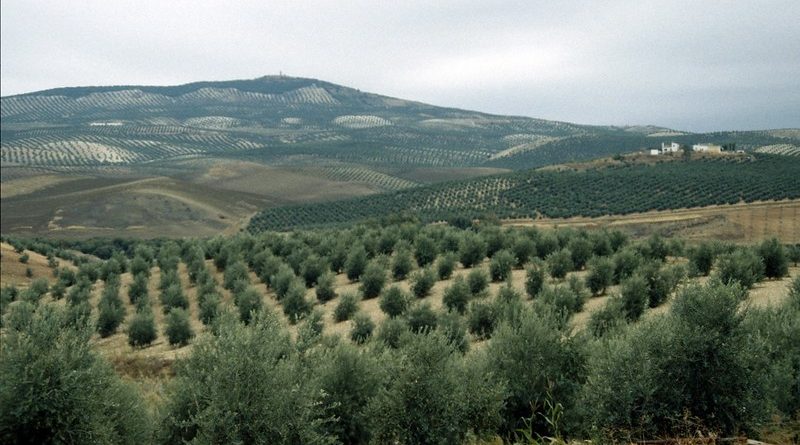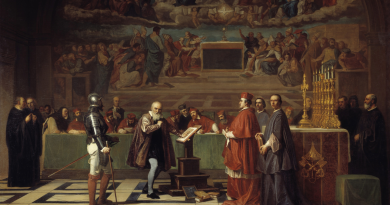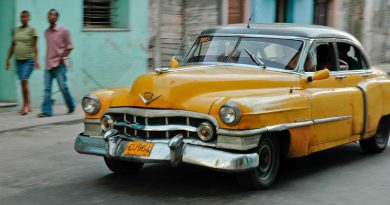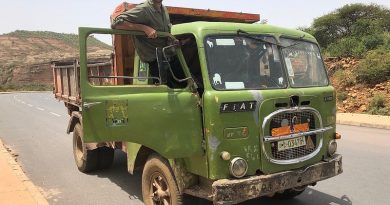North Spain Guide
Northern Spain has world class surfing, excellent regional cuisine, verdant pastoral landscapes, medieval pilgrimage routes, and cloud enshrined hiking trails. Visitors can enjoy freshly made cheeses and can feast on unique regional dishes, platters of pintxos, and fresh-from-the -sea octopus, fish, shellfish and barnacles all perfectly paired with local wine.
There are stunning cathedrals, an extensive Roman aqueduct, historic old towns situated in the hearts of modern Spanish cities, quirky and sophisticated museums, excellent wine regions, calming coasts, and gorgeous countryside vistas from all directions.
Northern Spain offers a wealth of exciting and diverse experiences. Barcelona is a world capital of culture with its many museums, interesting people and an extensive history. The Basque region is well known for its culinary scene, particularly the tradition of enjoying pintxos and for its many pintxos bars and Michelin star restaurants.
Northern Spain is a premier surf destination (check out Mundaka or Bilbao). The Way of Saint James, a pilgrimage trail paved in the Middle Ages, winds across northern Spain from the French Pyrenees to the northwestern province of Galicia. Walkers who choose to take this arduous but beautiful route can stay in inexpensive albergues or refugios in quaint villages along the way.
People
People of northern Spain often identify strongly with the region they are from. In the Rioja region wine production and vine cultivation are vital to the region’s lifestyle and economy. In the north western regions many people are involved in agricultural activities. In coastal areas fishing is an important livelihood for many people, as it has long been. Some of Spain’s most flavorful seafood is collected off the coasts of northern and north western Spain, and is eagerly purchased by local cooks at daily markets. Many people are also involved in tourism or commerce, and there are some highly regarded universities in the region.
Food
Every region in northern Spain has excellent local food. Often there are clear differences between the cuisines of the regions. Barcelona features world class restaurants and famous chefs, as well as a time-honored Catalan cuisine. At the city’s famous market La Boqueria visitors can stroll the marketplace admiring fresh produce and interesting regional items alongside some of Barcelona’s top chefs.
The Basque region is well known across Spain for its pintxos, which are similar to tapas. San Sebastian and Bilbao are some of the best places to sample pintxos and to experience the tradition of a night out going from bar to bar tasting just a few of the endless variations of these delicious small plates. There are also many Michelin star restaurants in the Basque region including at least eight in San Sebastian alone.
The seafood of Galicia, Spain’s northwest region, is some of the best in Spain and is often freshly caught. A celebrated Galician dish is Polbo á Feira (boiled octopus with paprika and olive oil). Other well-loved specialties from the sea include barnacles, langoustines, mussels, and various types of fish.
Caldeirada (Galician fish stew), and empanadas (savory pastries) stuffed with meat, tuna, sardines, vegetables or other ingredients are also popular. In the town of Santiago de Compostela, a sweet almond cake calledTorta de Santiago represents a long time tradition and is sold in many pastry shops.
The Asturias region is well known for its specialty cheeses such as Cabrales and Afuega’l pitu. Over one hundred different types of cheeses are produced in the region. A dry cider is also produced in Asturias, called sidra. It is made from Asturian apples and is sometimes served in traditional way by a sidra server (escanciador).
The cuisine of Navarra is known for Roncal cheese, locally grown asparagus, piminetos del piquillo (red peppers), and specialties made with duck such as Pato con Melecotones (duck with peaches). The salmon and trout of this region are also excellent.
La Rioja is best known for its wines which are mostly blends incorporating the predominant Tempranillo variety with other locally grown grapes such as Garnacha. There are many wineries and vineyards in the area. La Rioja also has an excellent reputation for its cuisine.
Every region in northern Spain has excellent local food. Often there are clear differences between the cuisines of the regions. Barcelona features world class restaurants and famous chefs, as well as a time-honored Catalan cuisine. At the city’s famous market La Boqueria visitors can stroll the marketplace admiring fresh produce and interesting regional items alongside some of Barcelona’s top chefs.
The Basque region is well known across Spain for its pintxos, which are similar to tapas. San Sebastian and Bilbao are some of the best places to sample pintxos and to experience the tradition of a night out going from bar to bar tasting just a few of the endless variations of these delicious small plates. There are also many Michelin star restaurants in the Basque region including at least eight in San Sebastian alone.
The seafood of Galicia, Spain’s northwest region, is some of the best in Spain and is often freshly caught. A celebrated Galician dish is Polbo á Feira (boiled octopus with paprika and olive oil). Other well-loved specialties from the sea include barnacles, langoustines, mussels, and various types of fish.
Currency
Euro
Language
Spanish
Note: Co-official languages in certain regions of northern Spain include Catalan, Galician, Basque, and Aranese.
When To Go
Weather in northern Spain, along the Cantabrian and Atlantic coasts, can be damp and chilly with plenty of rainfall. Visitors may experience a good deal of rain if visiting the northern coast and the northwest province of Galicia. Mountainous regions (such as the Pyrenees and the Cantabrian Mountains) often see snow during the winter and it is possible to participate in winter sports such as skiing during this time.
Catalonia is located nearer the Mediterranean with plenty of coastline. It enjoys a somewhat milder climate then the northernmost and north-western provinces, with warm or hot summers and mild winters.
Inland regions can be characterized by extremes in weather such as very cold winters and very hot summers though the temperature and climate varies considerably by region and topography.
During August many Spaniards take their vacation, traveling from the most populous cities to the beaches and coasts, so August may be the busiest month for travel though it depends where you go.
The famous Fiesta de San Fermín (‘running with the bulls’ festival) is held in Pamplona in July. This festival draws hordes of people from Spain and the world each year. Visitors traveling to the city during this time should be make accommodation arrangements well in advance.
Dress
Dress in northern Spain is fairly casual. What is appropriate will depend on the activity and the weather. Mountainous regions receive some snow in the winter and can be quite cold. Along the northern coast and in Galicia travelers should be prepared for some rain. Walkers hiking along the Way of St. James should bring appropriate attire and good shoes as the walk can be rugged. In cities such as San Sebastian, Bilbao, Barcelona and others, visitors often choose to be out and about in the evenings along with the locals enjoying tapas, sampling pintxos, and socializing.
There are many fine dining establishments across the region as well as casual bars and restaurants, and many nice wineries across the countryside and in the Rioja region. Travelers should dress according to where they will be going and what they will be doing. Some casual clothing, comfortable for walking, as well as some nicer attire for going out is generally recommended unless travel plans dictate otherwise.
Travel
Many international visitors arrive in northern Spain by first flying into the main Spanish airports of Barcelona or Madrid, then traveling on to the other regions by plane, train, car, or bus.
It is also possible to arrive by train or by car. Renting a car in the region is not a bad idea, as it will allow the visitor to see many out of the way places which may not be directly accessible by bus or train. To see the main sights and to visit the main cities it is generally possible to get around by bus or by train.
There are also some ferry services which arrive in Santander and Bilbao on the northern coast.
Health
Citizens of EU member states who hold a European Health Card (EHC) and citizens of some other countries which have an agreement with Spain may be eligible for free medical care if necessary during a visit to Spain. Travelers should check specific requirements and if they are not eligible for free medical care should be prepared to pay for any necessary medical services or consider purchasing a travel insurance plan prior to travel.
Health and medical services in northern Spain are generally good and there are plenty of clinics and pharmacies across the region with the exception of some remote or rural areas.
Visas
Most EU citizens and citizens from Schengen member states do not require a visa to enter Spain if visiting as a tourist (though they must carry proper identification). Citizens of some other countries including Australia, U.S., New Zealand, Canada, Japan, Israel, and Switzerland do not require a visa if they are visiting as a tourist and can stay for up to 90 days as long as a valid passport (valid for at least six months) is presented. Residents of most other countries need to apply for a visa before arriving, which can be done at a Spanish consulate in the country of origin. Those who wish to stay longer than 90 days or who wish to work or study in Spain may need to apply for a special visa. Visa requirements can change at any time so it is advised to check up to date requirements prior to travel.
Top 5 Sites
- Burgos Cathedral (Castille and Leon)
- Roman aqueduct of Segovia (Segovia)
- Dalí Theatre and Museum (Teatre-Museu Dalí) (Figueres, Catalonia)
- Sagrada Familia, Barcelona
- Picos de Europa National Park
Top 5 Things To Do
- Samplepintxosin San Sebastian (Basque Country)
- Shop Barcelona’s freshest produce, meat, sweets, and seafood at La Boqueria market
- Go wine tasting in La Rioja
- Walk along the pilgrimage trail which ends in Santiago de Compostela or simply take a bus to this amazing city laden with history, a grand cathedral, and friendly vendors offeringTorta de Santiago(almond cakes) around nearly every corner.
- Partner up with a local organization in the know who can get you special access to a Basque Txoko gathering (private gastronomical societies)




